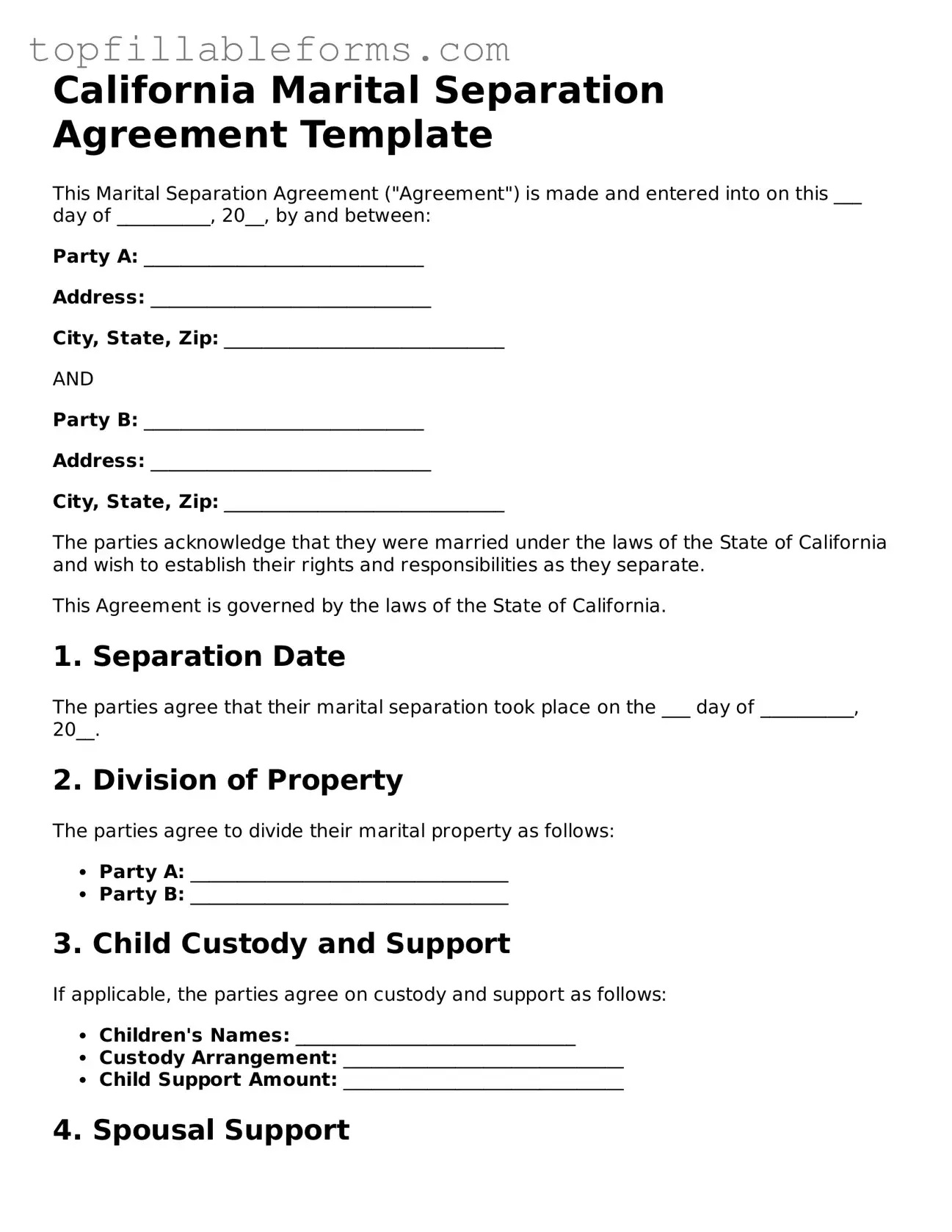California Marital Separation Agreement Template
This Marital Separation Agreement ("Agreement") is made and entered into on this ___ day of __________, 20__, by and between:
Party A: ______________________________
Address: ______________________________
City, State, Zip: ______________________________
AND
Party B: ______________________________
Address: ______________________________
City, State, Zip: ______________________________
The parties acknowledge that they were married under the laws of the State of California and wish to establish their rights and responsibilities as they separate.
This Agreement is governed by the laws of the State of California.
1. Separation Date
The parties agree that their marital separation took place on the ___ day of __________, 20__.
2. Division of Property
The parties agree to divide their marital property as follows:
- Party A: __________________________________
- Party B: __________________________________
3. Child Custody and Support
If applicable, the parties agree on custody and support as follows:
- Children's Names: ______________________________
- Custody Arrangement: ______________________________
- Child Support Amount: ______________________________
4. Spousal Support
The parties agree to spousal support terms as follows:
- Amount of Spousal Support: ______________________________
- Duration: ______________________________
5. Debt Responsibility
The parties agree to the responsibility for any marital debts as follows:
- Party A: __________________________________
- Party B: __________________________________
6. Miscellaneous Provisions
The following provisions apply to this Agreement:
- Both parties acknowledge that this Agreement may be amended only by a written document signed by both parties.
- This Agreement represents the entire understanding between the parties regarding the matters herein.
IN WITNESS WHEREOF, the parties have executed this Marital Separation Agreement as of the date first above written.
_______________________________ _______________________________
Party A Signature Party B Signature
_______________________________ _______________________________
Date Date
